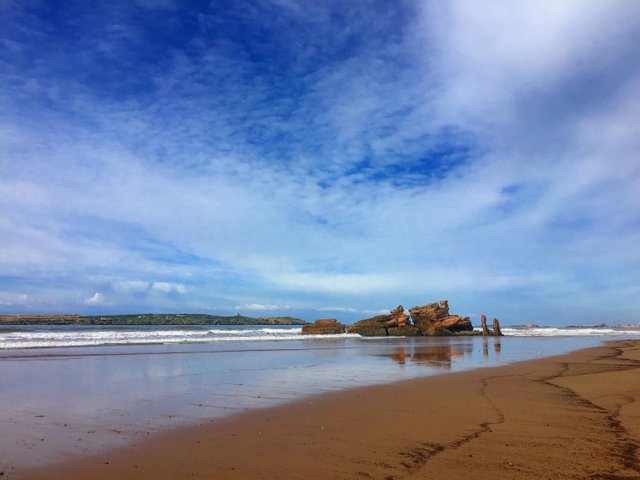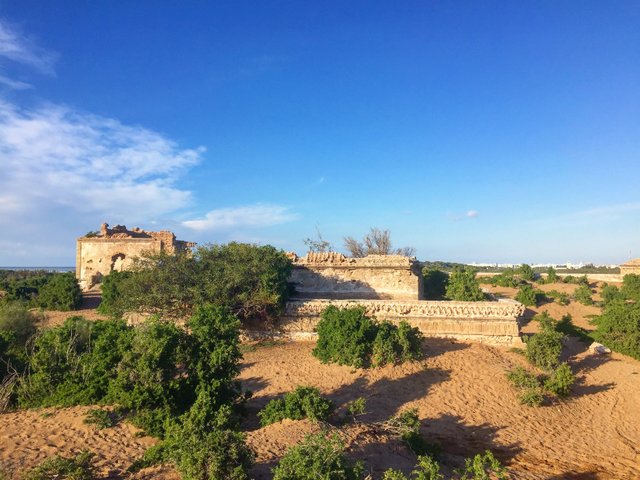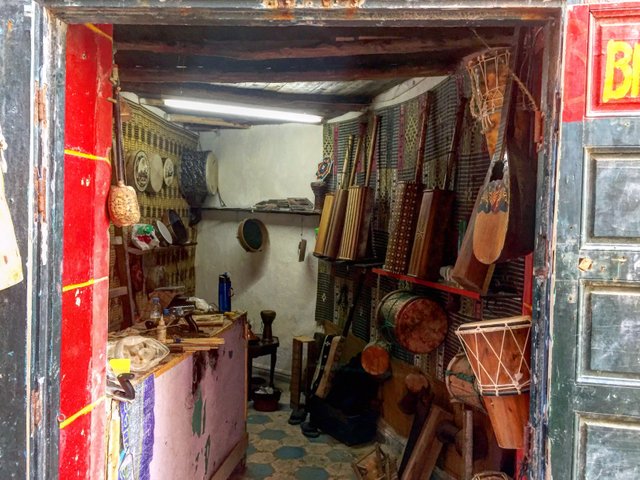Travel Morocco - Diabat - Castles Made of Sand
The persistence of imagination.
Take a walk out of Essaouira along its flat, mostly clean beaches and you'll have a fantastic view of the Isle of Mogador with it's open-air prison and mosque across the bay.
Settled in the 6th century BCE by Phoenicians, one of the first permanent structure was the watchtower from which the island gained its name. Later the Romans would come to know the area as the Purple Islands due to the Murex seashells founds nearby which were processed to make the rich purple of the toga picta.
The prison itself is an imposing brutalist structure built in 1897 by Sultan Moulay Abdelaziz to house Terhala rebels. Nothing more than four fortified walls with only one way in or out and no roof. It would late become a place of quarantine for pilgrims headed to Mecca.
Further along the shore you'll see what's left of a watchtower, itself built upon the remains of the even more ancient Bourj el Baroud, as it crumbles ever further into the ocean. Even the locals can't seem to set this one straight in their heads, referring to it as the Portuguese Castle.
 The 'Portuguese Castle' and Mogador Island.
The 'Portuguese Castle' and Mogador Island.
What's left of this fortification, much the same as what is now Essaouira, was built under the guidance of Sultan Mohammed ben Abdallah in the 1700's and used as a wood-burning lighthouse and watchtower. The current state of disrepair was caused by a disastrous flood of the nearby Oued Ksob in 1856.
Mohammed ben Abdallah, it turns out was a productive chap. Aside from his reviving of Essaouira with the assistance of many notable European architects, routing the French and conquering Mazagan much to the chagrin of the Portuguese he also found time to renovate Marrakech kasbah and build a palace the locals now know as Jimi Hendrix.
Before 1969 the sand-choked ruin would have been better known as Dar Soltane. Constructed by James Hoban, the very same man behind the other, famous White House, and gifted to the aforementioned sultan. This was a building that was left wanting for none of the most modern European design, everything from glass windows to gilded mirrors.
 The sand-choked remains of Dar Soltane.
The sand-choked remains of Dar Soltane.
In the late sixties this would all change. Now depending on who you believe, this is when the mighty Jimi Hendrix arrived following his love of horses or maybe local women and stayed for anything from three days to three months. The way it's told ole Jim ate at every table and slept under ever roof.
This isn't quite true of course, but it hasn't stopped a whole micro tourist industry springing up around the tales. If you feel so inclined it is still possible to stop for a bite at the Cafe Jimi or rest up in the Jimi Hendrix hostel in nearby Diabat.
The reality, as is unfortunately too often the case, is far less romantic. Jimi did indeed visit Essaouira and is on record as loving Morocco but according to his travelling companion, Deering Howe; "like George Washington he slept in everyone's house around the Moroccan countryside..."
The palace itself has now seen better days. There was a time when it was protected by the local residents but time, much like the tides at the nearby Portuguese fort, has taken its toll. The walls are crumbling and sandstorms have long since buried all but the sturdiest of fortifications.
Yet still, through some persistence of memory, you can find locals sat amongst the ruins with their acoustic guitars chasing the ghost of a man who may or may not even have been there.
If you fancy yourself as the next Jimi take a wander deep into the old Medina and you'll find the tiny workshop of Ayoub Soudani. A fifth generation guembri craftsman and purportedly from one of the two main Gnawa families responsible for introducing the instrument into Morocco.
 Ayoub's workshop in Essaouira Medina.
Ayoub's workshop in Essaouira Medina.
Irrespective, Ayoub is clearly a craftsman of no trifling ability. Lining the walls are some of the most handsome examples of this bass plucked lute I've seen whilst in the country. Inlaid with pearl and walnut each instrument can take up to a month and a half to make.
'During the month of Ramadan I make special ones.' He told me. 'I need something to do with my hands. To take my mind off of eating.'
The drum part is made from the skin on the back of a camels neck and it's three strings are made from goat gut. Ayoub has modified his own with mechanical tensioners and electrical pick-ups. The clubs apparently insist on him being able to plug into their PA systems.
'Are you playing anywhere this week?' I enquired.
'Some weeks I play three, four times a week in bars and clubs. Just not this season.' He paused. 'Maybe I'll find somewhere on New Year's Eve though, you Europeans like to drink!'
The Steem blockchain is currently being attacked by a central authority in order to take control of the witnesses. If you are not managing your witness votes, please consider setting @berniesanders as your witness voting proxy by clicking here to help restore the decentralization of Steem.
You have been curated by @hafizullah on behalf of Inner Blocks: a community encouraging first hand content, with each individual living their best life, and being responsible for their own well being. #innerblocks Check it out at @innerblocks for the latest information and community updates, or to show your support via delegation.